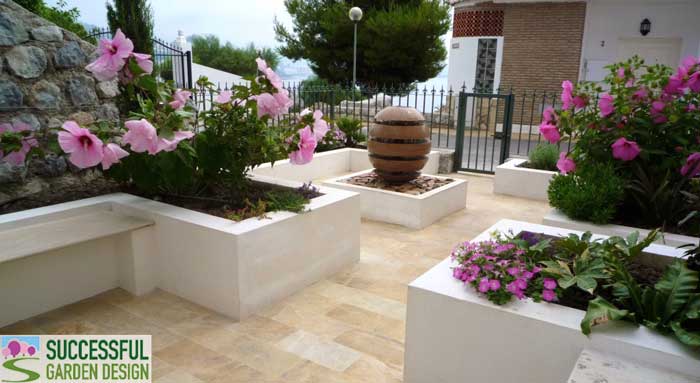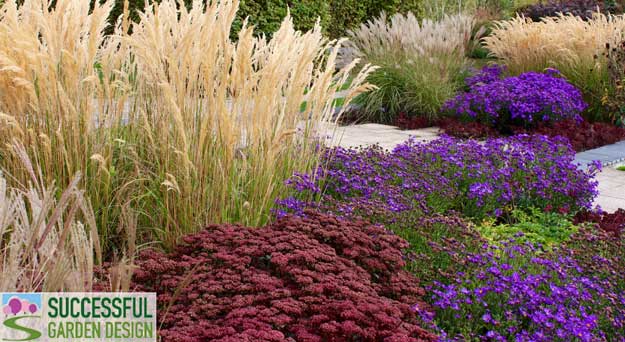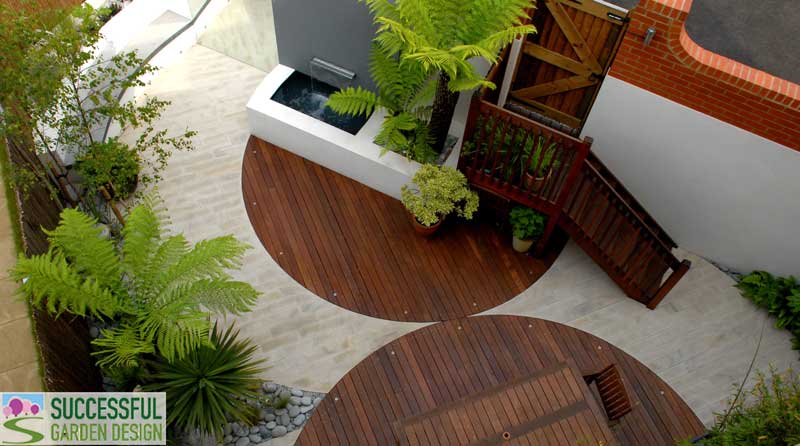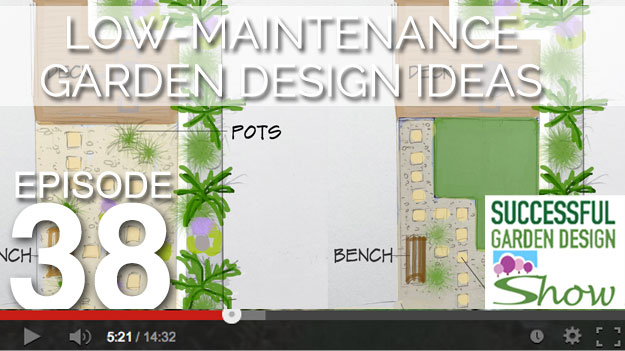I’m often asked about how to create a low-maintenance garden. So in this article, I’m going to share my top 3 tips as well as give you a video demonstration of how to do it…

1. DEFINE Low-Maintenance!
What does low maintenance mean to YOU?
One person’s easy can be another’s hard! For example, I don’t mind cutting the grass. Apart from the dog trying to bite the lawn mower, I find it a relaxing, easily accomplished task. BUT I really hate edging lawns, to me that’s fiddly and annoying.
My solution is to install a lawn edge, like brick pavers, so the clearly defined shape doesn’t require me to do much to maintain its neatness.
Other people find lawn cutting a chore regardless of a neat edge. So they would be better off not having a lawn, or at least the smallest one possible if they have children or pets that require one.

2. Keep it SIMPLE
Good design, for the most part, is simple. At least the underlying ‘bones’ of the design are. If your design layout is too fussy it will be harder to maintain and less appealing visually. Simple, geometric shapes often make for the best design.
Planting in groups creates more impact, looks established quicker, and cuts down on the varieties of plants needed. Having less variety of plants to look after reduces maintenance, especially if evergreen.

Also, try not to use more than 3 main materials, which leads me on to the next important tip…
3. Choose your MATERIALS carefully
Your material choices can make a huge difference to how much time you have to spend maintaining your garden.
The more porous the paving stones and gravel, the more algae and dirt will become trapped in them. Pressure washing a couple of times a year keeps the problem at bay but if you leave it too long, it’s hard to keep clean.

Painting sheds and fences can seem like a good idea in the short-term, but long-term you may regret it when the paint starts to peel!
Natural decking can also have the same issue with maintenance. If you keep it regularly oiled it will maintain its colour. Or if you don’t mind the timber turning silvery you won’t need to sand it down first.

Gravel can be a cheaper alternative to paving large areas but it can be a pain to keep clean if there are a lot of deciduous plants and trees shedding their leaves in the autumn.

Designing a small low-maintenance garden demonstration
Learn more with a FREE garden design web class
Choose your class here: https://www.successfulgardendesigner.com/free-classes


2 replies to "Low maintenance garden design tips"
With the changing climate and periods of intense rain becoming more frequent, surely we should be using porous materials to allow the rain to soak into the ground, even if they do require more maintenance?
I have seen a space for a car which uses a green ‘honeycombed’ material to provide ‘hard standing’ yet allows rain through it. I think all they do is run the lawn mower over it to keep the weeds down. I have driven past this for many years so it looks as though it is a durable solution. One day I will pluck up the courage to knock on the door and ask exactly what it is.
Hi Catherine,
Yes, that’s a very good point. The weed suppressant membranes under the gravel I mentioned are porous (unless you use plastic, of course) but the commercial ones such as mypex or the wool based allow water through, they merely stop the light getting through.
The honeycombed plastic you mention is usually available from builders’ merchants and you can either have grass or gravel through it. And if used with gravel, I would still recommend putting a membrane under it.